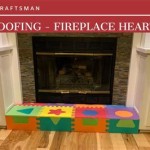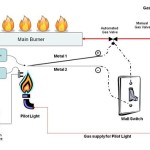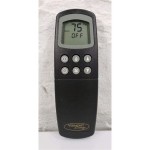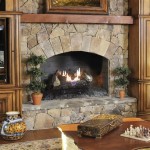Gel Fuel Fireplace Logs: An Exploration of Functionality and Considerations
Gel fuel fireplace logs represent a specific approach to creating the ambiance of a traditional wood-burning fireplace without the associated complexities. They offer a flame-based heating solution that relies on a gelled alcohol mixture, packaged within a can or similar container, and placed within a designated fireplace or fire pit setting.
The operation of a gel fuel fireplace log system is relatively straightforward. The gel fuel, typically composed of isopropyl alcohol and thickening agents, is ignited, producing a visible flame. The flame's size and intensity are primarily determined by the surface area of the exposed fuel and the composition of the gel itself. The heat generated is generally radiant, warming the immediate vicinity rather than contributing significantly to whole-room heating.
Gel fuel fireplaces are often marketed as ventless solutions. This designation stems from the fuel's relatively clean-burning nature when compared to wood or gas. The primary byproducts of combustion are water vapor and carbon dioxide. However, the lack of venting does not eliminate the need for adequate ventilation within the room. Carbon dioxide levels can still rise to potentially unsafe levels if combustion occurs in a poorly ventilated space, especially over extended periods.
Understanding the Limitations of Heat Output
A crucial aspect to consider is the limitations of heat output from gel fuel fireplaces. While they offer a visual appeal and a degree of warmth, their heating capacity is considerably lower than that of wood-burning fireplaces or gas alternatives. Gel fuel fireplaces are primarily intended for ambiance rather than as a primary heating source. The heat generated is typically sufficient for warming a small area directly in front of the fireplace, but it is unlikely to significantly raise the overall temperature of a larger room.
The British Thermal Unit (BTU) output of a single gel fuel can is typically in the range of 3,000 to 9,000 BTUs per can. In comparison, a standard wood-burning fireplace can generate between 20,000 and 40,000 BTUs per hour, and a gas fireplace can produce even more. This stark difference in heat output underscores the importance of understanding the intended use of a gel fuel fireplace. It is primarily a decorative element that provides some supplemental warmth, not a replacement for a conventional heating system.
Furthermore, the duration of burn time for a gel fuel can varies depending on its size and the intensity of the flame. Most cans will burn for approximately two to three hours, requiring replacement to maintain the fire. This necessitates a consistent supply of gel fuel for prolonged use, adding to the overall operational cost.
Evaluating Safety Protocols and Considerations
Safety is paramount when operating any type of fire-based appliance, and gel fuel fireplaces are no exception. While often touted as being safer than traditional fireplaces, they still pose potential risks that must be addressed. The flammable nature of the gel fuel necessitates careful handling and storage to prevent accidental ignition.
One key safety concern is the potential for spills. If a can of gel fuel is knocked over while burning, the liquid gel alcohol can spread rapidly, potentially igniting nearby flammable materials. It is essential to use a fireplace screen or enclosure to prevent accidental contact with the open flame and to contain any spills. Furthermore, it is recommended to have a fire extinguisher readily available in case of an emergency.
Another important safety consideration pertains to refilling gel fuel cans. Refilling should only be done with designated gel fuel, and only after the can has completely cooled down. Attempting to refill a hot can could lead to a flash fire or explosion. Additionally, using alternative fuels or flammable substances in the gel fuel can is strictly prohibited, as it can result in uncontrolled burning and hazardous emissions.
Ventilation is another critical aspect of safety. Although gel fuel fireplaces are marketed as ventless, they still produce carbon dioxide. Adequate ventilation is necessary to prevent the buildup of carbon dioxide to unsafe levels. Opening a window or using a ventilation fan can help ensure that the room is properly ventilated. Carbon monoxide detectors should also be installed and regularly maintained to provide an early warning of dangerous CO levels.
Analyzing the Aesthetic and Environmental Implications
The aesthetic appeal of gel fuel fireplaces is a significant factor in their popularity. They provide a visual focal point and create a warm, inviting ambiance. The realistic flame appearance can mimic the look of a traditional wood-burning fire, albeit without the crackling sounds and smoky aroma. The ease of installation and operation makes them an attractive option for individuals seeking to add a fireplace to their home without the complexities of chimney construction and wood storage.
Moreover, gel fuel fireplaces offer a degree of flexibility in terms of design. They can be incorporated into various fireplace surrounds, from traditional brick mantels to contemporary metal enclosures. Portable gel fuel fireplaces are also available, allowing users to move the fireplace from room to room as desired. This versatility makes them adaptable to different living spaces and lifestyles.
From an environmental perspective, gel fuel fireplaces present a mixed picture. While they do not produce smoke or soot like wood-burning fireplaces, they still contribute to greenhouse gas emissions. The burning of isopropyl alcohol releases carbon dioxide, a greenhouse gas that contributes to climate change. However, the carbon footprint of gel fuel fireplaces is generally lower than that of wood-burning fireplaces, which also release particulate matter and other pollutants.
The environmental impact of gel fuel also depends on the source of the isopropyl alcohol. If the alcohol is produced from renewable resources, such as biomass, the overall environmental impact can be reduced. However, if the alcohol is derived from fossil fuels, the carbon footprint will be higher. Consumers interested in minimizing their environmental impact should seek out gel fuel products that are made from sustainable sources.
In summary, gel fuel fireplace logs offer a specific combination of aesthetic appeal, relative ease of use, and limited heating capacity. Understanding the limitations, safety considerations, and environmental implications is necessary to make informed decisions regarding their suitability for individual needs and preferences.

Real Flame 18 In Convert To Gel Log Insert Oak Com

Terraflame Gel Fuel Fire Log Insert 24 Inch In Oak Finish

Terraflame Gel Fuel Fire Log Insert 18 Inch In Birch Finish

Gel Fuel Fire Log Insert Luxury

Gel Fuel Fire Log Insert Luxury

Create A Cozy Ambiance With Gel Fireplace Logs

Gel Fuel Fire Log Insert Luxury

Discontinued Real Flame Gel Fuel Outdoor Conversion Log Set 320

Gel Fireplace Logs Can Transform An Unused Future Expat

Real Flame 13oz 24pk Premium Gel Fuel Cans Target
Related Posts








